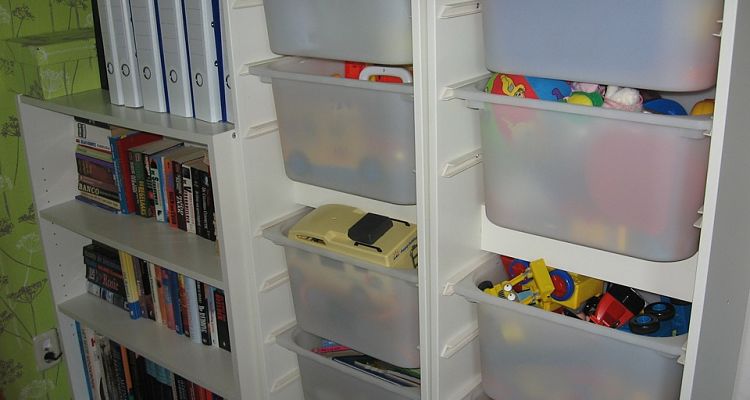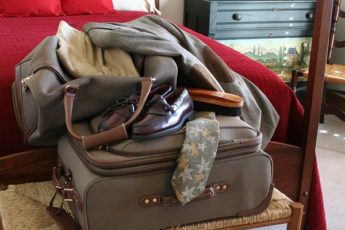
When it comes to moving, there is no getting around the packing process. Not only is it time-consuming but getting to the more fragile and bigger items can be somewhat of a challenge. Moving experts would tell you that the art of packing without having your blood pressure soar to new heights is to tackle the job room by room. If you are aware of the day that you would like to move out of your current home, give yourself two weeks prior to that date for packing and labeling your boxes.
There are various techniques that might help make packing easier and less stressful. You can make sure that your belongings get to your new home quickly and safely by decluttering, making a packing schedule, and using the right packing supplies. You may simplify the packing process and concentrate on enjoying your new home with a little advance preparation and planning.
Here are a few suggestions to get packing with ease.
Packing Tips
Fortunately, there are many tried-and-true moving pieces of advice available to make the entire process smoother. This is probably because almost everyone ends up moving at some point. You can ensure that everything is in order before, during, and after the move by using a moving checklist; another helpful moving tip is to make a commitment to maintaining a positive outlook despite all the upcoming changes.
Some moving advice focuses on the best ways to pack a moving truck, while others provide reminders to cancel various services or make plans for things to be ready at the new home. Still, more moving advice focuses on smaller details, such as how to care for pets during a move or what to do when the movers are running late.
Plan Ahead To Make Packing Easy
During a move, many things can go wrong. There is no one-size-fits-all moving guide with moving suggestions for every single situation that could arise during the moving process because there are so many moving components and small details. Although different people will have different needs or worries, such as how to pack glassware for moving or how to move delicate antiques or expensive wood furniture safely, in most situations, the advice on this basic list of moving tips and techniques will be helpful. Prepare for a smoother, quicker, easier move by taking a peek. The best moving advice often includes creating a packing schedule two weeks in advance to keep stress levels low.
Evaluate Your Home and What You Move
Especially if you are hiring movers, make a thorough inventory of your belongings. You can determine what to take and what to leave behind by keeping an accurate inventory of all of your household belongings.
Additionally, the thorough inventory sheet will be quite helpful in case something gets lost while moving. By the way, did you know there is a moving software that will assist you in inventorying your property, keep you organized during the entire process, and even allow you to estimate your moving expenses?
Take Inventory With Photographs
When taking photographs for inventory, make sure you get clean and detailed images of each item from different points of view. To avoid any insurance issues, focus on documenting any current damage or defects. Close-up photographs of precious things, such as jewelry or electronics, highlighting unique features or serial numbers, should be included. For greater image quality, think about using a digital camera or a smartphone with a high-resolution camera.
Make a digital folder or album just for these inventory images, and organize them by category or area for easy access. It’s also a good idea to have a written inventory list with the images, with additional information such as item descriptions, purchase dates, and estimated prices.
Purchase Quality Packing Materials and Moving Boxes

Having everything you need will prevent you from having to dash to the store for supplies just as you are getting into your stride, or from having to skimp on tape when it starts to run low. Invest in high-quality packing tape to ensure that your boxes stay securely closed during the move. Add 25% after calculating how much of each you’ll need. It’s preferable to have a little bit more than not enough. Note if you require extra boxes for glasses, plates, or artwork as well.
For efficient packing and moving, consider using wardrobe boxes for hanging clothes, which can save time and keep your garments wrinkle-free. One of the most effective packing hacks is to roll your clothes tightly, which not only saves space but also minimizes wrinkles. When you pack clothes, consider using vacuum-sealed bags for out-of-season garments to save even more space.
Last but not least, remember to pack tools for disassembling furniture as well as other miscellaneous items like toilet paper, garbage bags and cleaning supplies (for easy access when the house is empty!).
Label The Boxes
A seamless transition requires careful labeling. Use appropriate tags and identify the boxes on all sides. Even though it could take some time, it will be very worthwhile once your items arrive. Utilize whatever is necessary to keep track of your boxes. Maybe labels with different colors may work best for you. Simply keep track of your boxes and use whatever method suits you best.
Avoid writing your full name and address on the labels of your boxes because those details could be exploited to steal your identity. Use a labeling scheme, such as numbers or symbols, that only you and your movers will understand. Knowing your personal information from the outside of a package can aid in preventing identity theft.
You’re going to need some essentials as soon as you arrive at your new place. But guess what? They’re buried under a mountain of boxes. Avoid this by packing a “Last In, First Out” box. This box should contain essentials like a change of clothes, toiletries, and basic kitchen items. Load it last so it’s the first thing you unload.
Color-Code Your Boxes
Color-code your boxes by assigning a different color to each room for easier unpacking. Use different colors or patterns to signify different groups within each color. Make a description or key that explains the colors and their corresponding categories. Colored sticky labels or duct tape can help you identify items quickly, especially in low-light situations. Color coding should be coordinated with a numbering or labeling system, and boxes should be labeled with both color and room numbers. Keep a master inventory list to keep track of contents by color and category.
To save time on moving day, pre-pack dresser drawers and secure them with plastic wrap.
Protect Your Identity
When moving, it’s crucial to protect your identity when packing your belongings. When you pack your possessions, it’s simple for your personal information to get misplaced or stolen. Sensitive information should be packed separately and transported with you during the move. Birth certificates, passports, Social Security cards, and financial records are examples of such papers. Keep these crucial papers safe during the relocation because it’s better to be safe than sorry.
Pack Room by Room

Make an inventory of the stuff you intend to bring first. Doing this according to each space will enable you to arrange more quickly and maintain track of your priceless possessions. Then, gather all the moving equipment you’ll require to secure your belongings throughout transit, including packing and moving boxes, padding, tape, and blankets.
Try to group your belongings according to their functions when you want to pack them; for instance, pack kitchen materials together. Last but not least, remember to label your moving boxes so you will know precisely where each one belongs in your new house. Note the room name, the box’s contents, and whether it’s empty on the top and sides of your box.
Create a “No-Pack Zone” in a corner of your home. Place items here that you’ll need up until the last minute on a moving day. This way, you won’t accidentally pack something crucial and then have to rummage through boxes to find it.
Careful planning and packing can make a significant difference in how simple it is to unpack and settle in a new location
Pack Books in Suitcases With Wheels
Consider using more things with wheels, such as rolling suitcases, while packing books for increased convenience. If you have a robust rolling backpack, it can also be a great way to transport books. Alternatively, you may repurpose a small rolling cart to move your book collection. Consider renting a hand truck or dolly to move big quantities of books more efficiently. To maintain stability and ease of movement, distribute the weight evenly within the bag or wheeled item.
Packing books with their spines facing down can warp them over time. Always pack books flat and alternate the spine and open side to maintain their shape. If you’re an avid reader, this tip is a game-changer.
Use Socks for Glassware
To provide better protection for glassware, choose thicker socks. Choose clean, lint-free socks to avoid leaving residue on your glasses. To give optimum cushioning and reduce clinking, consider using different socks for each glass or stemware piece. Wrap the glassware with packing paper or bubble wrap before putting the sock over it for added protection. Use brightly colored or patterned socks to preserve your glassware while also making it simpler to recognize and unpack in your new house.
One of the best moving tips and tricks is to use paper towels as padding between fragile items like dishes; it’s an eco-friendly alternative to bubble wrap.
Don’t Overload
To keep your boxes stable, make sure to stack heavier stuff on the bottom; however, don’t overdo it. When packing heavy items like books or kitchen appliances, use smaller boxes to make them easier to carry. Overstuffed boxes or boxes that are overly heavy can result in damaged items, even if you are not doing the lifting. To ensure fewer drops and simple handling, make sure all the boxes are an appropriate weight.
Though you might believe packing a few large boxes will be simpler than packing numerous little ones, you’ll still be faced with the same challenge. You’ve made it more difficult for yourself in the long term if you can’t move the boxes by yourself.
Use smaller boxes exclusively. While packing them all up could take a bit longer, they will be much simpler to transfer and transport.
Packing your Bathrooms
Bathrooms are pretty lightweight to accumulate items from and pack away but still a significant amount of care of required to store them away. For bathroom packing, you should always store your bathroom items in zipped top bags to avoid spillage and of course for an easy find when you get to the new home. Tightly secure all bottle nozzles and it would also be wise if you were to reinforce it with tape as well so that it would not open.
As you work your way through the bathroom cabinets and medicine shelves, separate each member of the family’s items and placed them in a zipped top bag that has their name labeled on it. Use plastic bags for holding your bathroom tissue, bathroom detergent, etc., and secure the bags with a twist tie to avoid children from tampering with them. Throw out the items that you do not need or that could be replaceable. Such items include old toothbrushes, bathroom mats, and shower curtains.
Ever opened a box to find your shampoo spilled all over your clothes? To avoid this, pack all liquids together in a plastic bin, not a cardboard box. This contains any potential spills and makes it easier to clean up if they do happen.
Packing your living room
Given that the living room is typically one of the largest and most used areas of a home, packing it for a move requires particular care. Start by organizing the space and getting rid of anything you don’t use or need. When it comes time to unload, properly label each box with its contents to make it simple to locate what you need.
Disassemble any furniture that can be taken apart before you begin packing it. To make it simple to reassemble the furniture in your new house, keep all the screws, bolts, and other minor parts in one clearly labeled bag. To avoid damage during the relocation, wrap the furniture in blankets or cushioning for protection. You can avoid scratches and dents, by wrapping anything that cannot be disassembled, like big bookcases or entertainment centers, in plastic wrap or moving blankets. You can securely and effectively pack up your living room and make sure that your possessions reach your new house in good shape with a little bit of preparation and care. Before moving day, make sure to set up utilities in your new place to avoid any inconvenience.
Packing your home office
Moving your home office is a huge undertaking, especially if you are moving such items as your desk, printer, fax machine, computers, etc. Not to mention, there are many printed materials that you may have stored either in a cabinet or your desk drawer. The first thing to do would be to get your paperwork out of the way. Visit an office supplies store and purchase a few accordion-styled file boxes, which are not expensive at all. You can also store your files in small plastic containers, which makes it easy when transport them.
Store your pens, paperclips, and other such items, even your power cords, etc. in zipped top bags and keep these items along with your paperwork in the trunk of your car. Use masking tape to label cords and cables, so you know which device they belong to when you’re setting up in your new home. If you have a desktop computer, bubble wraps the monitor to protect its glass and you can store the computer’s tower in a secured box with Styrofoam corners which would help to hold it in place.
Similarly, if you have a laptop, unless you would be using it anytime soon, we suggest that you store it away in your laptop bag or perhaps a bag you may have in your home that may double as one. The best way to pack electronics is to use their original boxes, which are designed to protect them
Packing valuables and fragile items
It’s crucial to take additional care while packing and transporting valuables to make sure they reach your new home securely and safely. Make a list of all the priceless possessions you need to transport, including jewels, fine art, and antiques, to get things started. If you’re going cross country, hiring professional movers can save time and ensure that heavy items are handled with care. Consider transporting your valuable items in your car.
Consider double-boxing fragile objects to provide additional protection if they are very delicate. Each box should be carefully marked with its contents, and fragile boxes should be identified. When it’s time to move the items, think about doing so in your own car rather than on the moving truck to reduce the possibility of damage or loss. Be careful to let the movers know if you need to transport valuables on the moving truck so they can handle them with additional caution.
Don’t Forget the Unpacking
It’s important to take the time to sort and arrange your belongings before packing, categorizing items into different groups and clearly marking boxes. One of the most practical tips for moving is to pack an essentials box that includes toiletries, snacks, and important documents. When you get to your new house, finding things will be much simpler as a result. Also, taking the time to pack small items carefully can help to avoid damage when you’re moving.
Having a well-thought-out plan in place can make the unpacking process much easier. As time permits, start by unpacking the items that are absolutely necessary first, such as kitchenware, towels, and bedding. Then, move on to other items. You may make a simple and stress-free move to your new home by being attentive and orderly when packing and unpacking. On a moving day, keep a small bag with essentials like phone chargers, medications, and snacks easily accessible.
Packing for a move isn’t just about tossing items into boxes. When executed well it can lead to significant time, money, and stress savings. The type of boxes you select and clever techniques for securing delicate items are all critical factors. So, as you prepare for your upcoming move, keep in mind that the details are important, and these packing tips can define the success of your moving experience.
Movers Near You





Leave a Comment